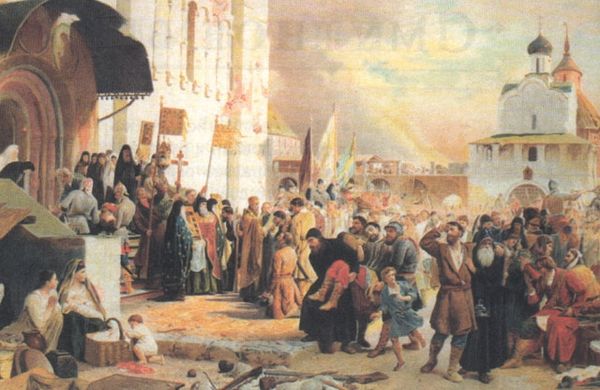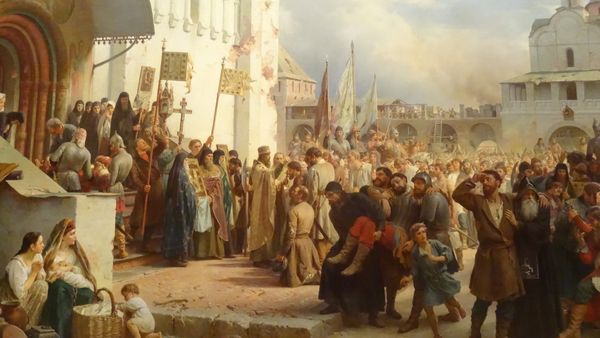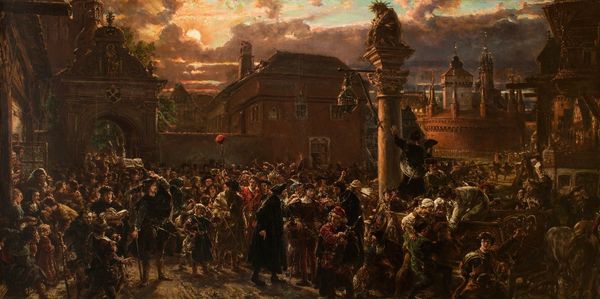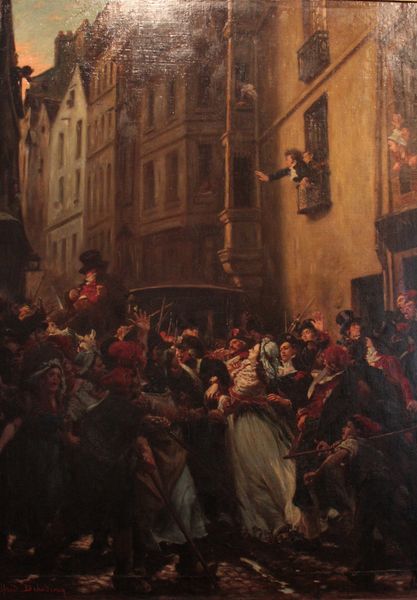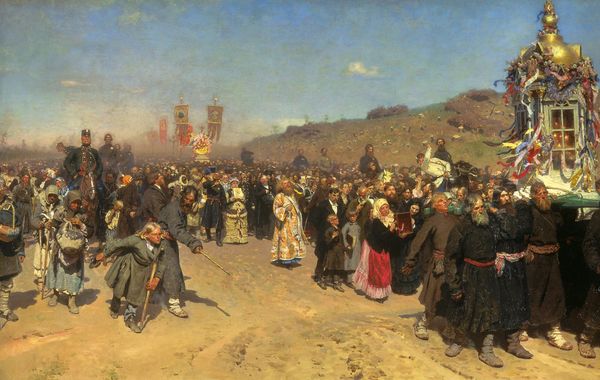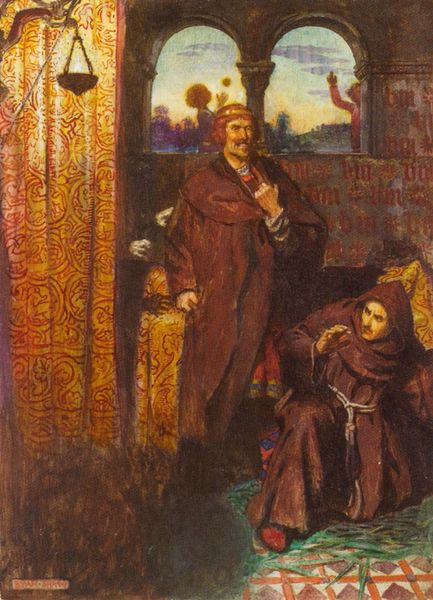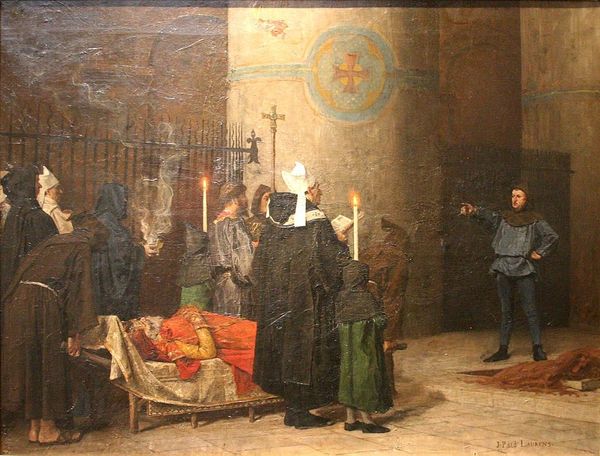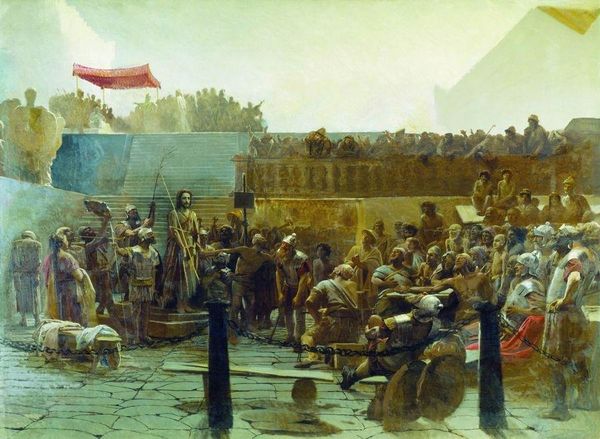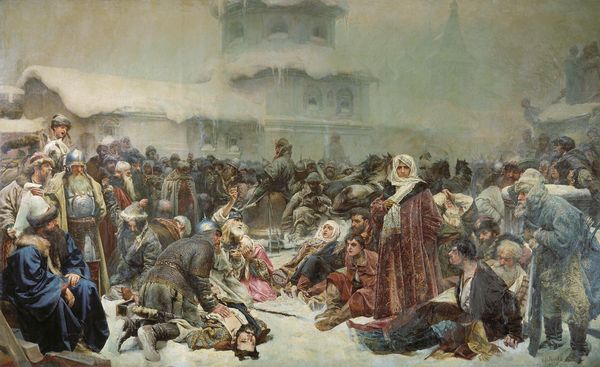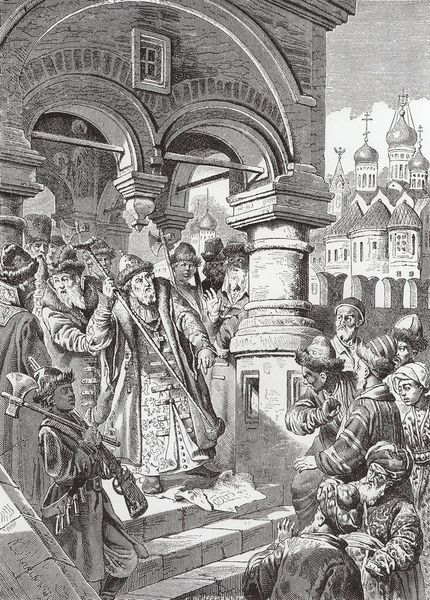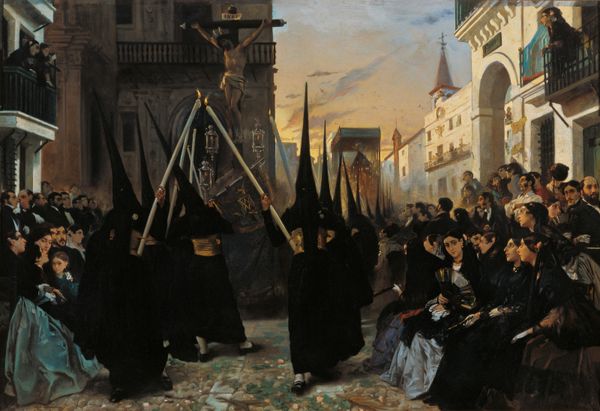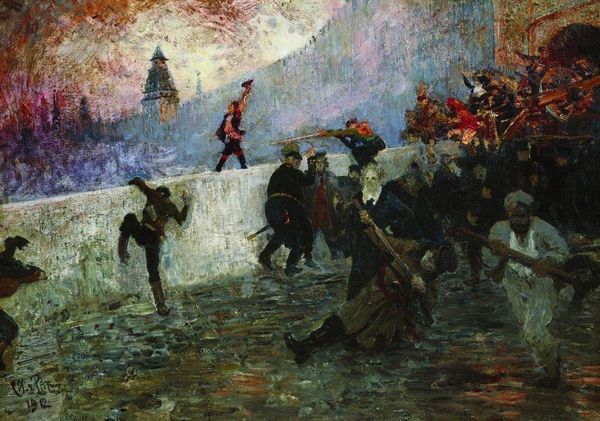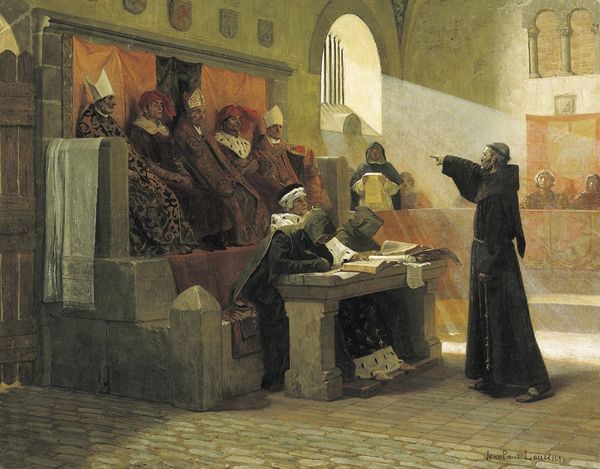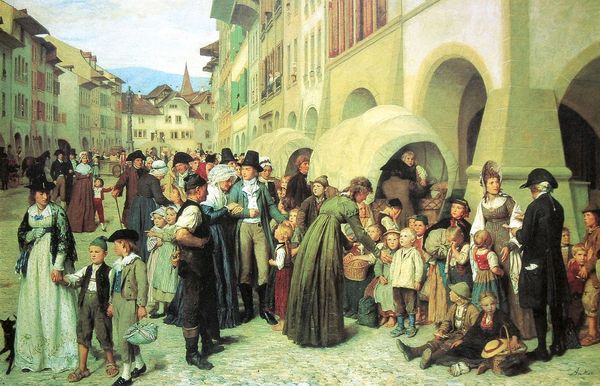
painting, oil-paint
#
portrait
#
painting
#
oil-paint
#
history-painting
#
academic-art
#
realism
Copyright: Public domain
Curator: Émile Friant’s 1908 canvas titled "Capital Punishment" arrests the viewer immediately. It’s overwhelmingly grim. Editor: Grim, indeed. The cold light, the stark verticality of the guillotine—it speaks of inexorable finality. You feel the weight of it. Curator: Friant depicts the seconds before execution. Observe how the material reality is rendered: the somber dress of the officials, the rough garments of the condemned, the polished wood of the guillotine, and the priest’s crucifix—these are objects laden with meaning produced under specific social conditions. Editor: Yes, the wood, metal, and cloth… all carefully rendered. And that striking juxtaposition of light and shadow draws attention to the priest's uplifted crucifix. Semiotically, it's a complex play between faith and earthly power. Curator: What strikes me is Friant's conscious decision to illustrate the instruments and authorities of the state in this moment of calculated violence. One must ask what the production of these instruments reveal about 19th-century social priorities and the distribution of resources for enacting state-sanctioned deaths. Editor: Perhaps, but focus for a moment on how Friant guides our eyes. The pale hues draw the gaze to the religious absolution, yet our view is always pulled back towards the imposing machinery in the backdrop. It is visually dominant. Curator: Friant's precise, academic style almost domesticates the violence by normalizing it into observable routines of labor. Is he subtly implicating the viewer, who becomes complicit by beholding the ritual? Editor: I'd say he's exploring humanity confronting death—an archetypal theme—using the visual language of academic art to engage philosophical notions. The priest and the convict become more than simply men but emblems of hope and despair. Curator: Certainly, themes resonate—but viewing it primarily in isolation neglects Friant's artistic engagement within a specific context where executions and instruments of execution represent the consolidation of centralized legal authority and new industrialized killing practices. Editor: Perhaps we can agree that "Capital Punishment" serves as a stern meditation. Curator: On the convergence of industry, faith, and the performance of social power. Editor: An unforgettable visual moment to contemplate humanity.
Comments
No comments
Be the first to comment and join the conversation on the ultimate creative platform.
